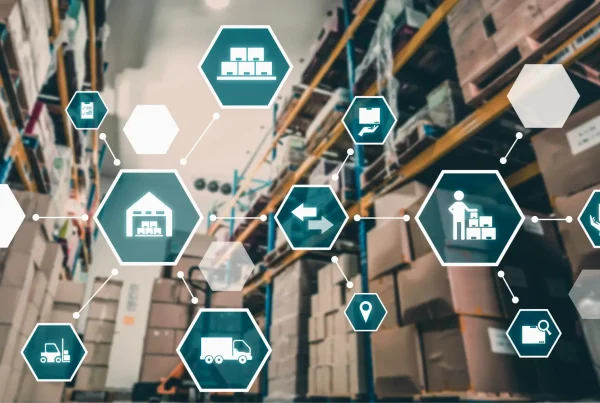To thrive in an environment of ever-changing market dynamics and consumer preferences, and the outsize and growing influence of e-commerce giants, retailers need tools that enable them to adapt quickly and effectively.
Retail Price Optimization Software: Unveiling the Power of Real-Time Adaptability
Pricing is more than just a number on a product tag. It’s a strategic lever that can significantly impact a retailer’s bottom line. Retail price optimization software leverages advanced algorithms, data analytics, and artificial intelligence, enabling retailers to adapt their pricing strategies in real-time to stay ahead of the curve.
AI-Powered Precision: The Heart of Retail Price Optimization Software
At the core of retail price optimization software lies artificial intelligence (AI). These sophisticated algorithms analyze vast datasets including historical sales, competitor prices, market trends, and consumer behavior. AI pricing software enables retailers to understand their customers better and predict how price changes will affect buying decisions. By utilizing AI-based price optimization, retailers can adjust prices with precision, ensuring they’re neither too high to deter customers nor too low to erode profits or shoppers’ esteem for the brand.
Real-World Example: Amazon
Amazon, the e-commerce giant, has set the gold standard for AI-based price optimization. The company continuously adjusts prices for millions of products in real-time. By analyzing market conditions, competitor pricing, and customer behavior, Amazon maximizes its revenue without sacrificing margin or customer satisfaction.
Dynamic Demand Forecasting: Meeting Customer Expectations
Retail price optimization software doesn’t just focus on setting the right price; it also excels when paired with demand forecasting. With access to real-time data, retailers monitor customer demand trends and adjust inventory levels accordingly. This ensures that products are in stock when customers want them, minimizing lost sales due to stockouts or tied-up capital due to overstocked items.
Real-World Example: Zara
Zara, a fast-fashion retailer, relies on real-time demand forecasting to keep its inventory fresh and appealing to customers. By continuously analyzing market trends and customer preferences, Zara can swiftly adapt its product offerings to cater to changing demands, allowing the company to remain a fashion industry leader.
Competitive Benchmarking: Staying Ahead of Rivals
Keeping an eye on the competition is vital. Price optimization software enables retailers to monitor their competitors’ pricing strategies in real-time. Retailers are then able to set their prices strategically, differentiating themselves from rivals while staying competitive. The ability to adjust prices faster than competitors gives an edge in capturing market share.
Real-World Example: Walmart
Walmart utilizes retail pricing solutions to stay competitive. By continuously tracking competitors’ prices, it can adjust its own prices swiftly. Walmart’s former “Savings Catcher” tool, currently discontinued, automatically compared their prices to competitors and refunded the difference to customers if a lower price was found.
Personalized Pricing: Winning Customer Loyalty
One-size-fits-all pricing is a thing of the past. Retail price optimization software enables retailers to implement personalized pricing strategies. By analyzing individual customer data and purchasing history, retailers offer tailored discounts, promotions, and loyalty rewards. This drives sales and also cultivates customer loyalty.
Real-World Example: Starbucks
Starbucks has mastered personalized pricing with its rewards program. By collecting data on customer preferences and purchase history, Starbucks offers personalized discounts and promotions, ensuring customers feel appreciated and keep coming back.
Agile Promotion Management: Optimizing Marketing Campaigns
Marketing and promotions play a crucial role in retail success. Price optimization tools help retailers plan, execute, and adapt marketing campaigns with agility. By analyzing real-time sales and consumer response, retailers fine-tune their promotions, ensuring maximum impact and return on investment.
Real-World Example: Target
Target uses retail pricing solutions to optimize its promotion strategy. With the ability to analyze real-time sales and customer response, Target adjusts promotions on the fly, ensuring customers get the most value while the company maximizes revenue.
Optimizing Supply Chain Efficiency: Reducing Costs
Price optimization software doesn’t stop at pricing strategies; it also impacts supply chain management. By predicting demand more accurately and optimizing inventory levels, retailers reduce carrying costs and minimize the risk of overstock or stockouts. This, in turn, leads to cost savings that can be reinvested in other areas.
Real-World Example: Coca-Cola
Coca-Cola uses AI-based price optimization to manage its supply chain efficiently. By accurately forecasting demand and adjusting production schedules, it minimizes production costs and reduces waste for significant savings.
Enhancing Merchandising Strategies through Real-Time Pricing Adaptability
The ability to adapt pricing in real-time empowers retailers to create and execute more effective merchandising strategies. Let’s explore how this capability improves the overall approach to merchandising and what it means for retailers.
Strategic Assortment Planning: Meeting Customer Needs
Retailers use real-time pricing data to make informed decisions about their product assortment. By monitoring customer preferences and sales trends, they add, modify, or discontinue products to meet evolving customer needs. This ensures that the merchandise offered aligns with what customers want, leading to increased sales and customer satisfaction.
Merchandising Personalization: Delivering Tailored Shopping Experiences
Retail price optimization software not only enables personalized pricing but also supports personalized merchandising. By analyzing customer data, including purchase history and browsing behavior, retailers are able to present tailored product recommendations and in-store layouts. This increases the likelihood of cross-selling and upselling and enhances the shopping experience.
Real-World Example: Sephora
Sephora, the beauty retailer, uses AI-based price optimization to personalize its merchandising. The company’s recommendation engine suggests complementary products based on a customer’s previous purchases, increasing average order value and customer satisfaction.
Seasonal and Trend-Based Merchandising: Staying on the Cutting Edge
Merchandising is heavily influenced by seasons and trends. Retail price optimization software helps retailers stay ahead by monitoring real-time data on emerging trends and seasonal shifts. Retailers adjust their inventory and product displays accordingly to maximize sales during peak periods.
Real-World Example: H&M
H&M, a global fashion retailer, uses AI-based price optimization tools to adapt to seasonal trends quickly. By analyzing social media trends and consumer data, it introduces in-demand fashion items and adjusts store layouts, staying ahead in the fast-paced fashion industry.
Inventory Management: Reducing Excess Stock and Markdowns
Overstocked items and excessive markdowns are profit drainers for retailers. Price optimization software enables retailers to reduce excess stock and avoid the need for deep discounts. By continuously monitoring inventory levels and adjusting pricing strategies, retailers are able to strike the right balance between supply and demand.
Real-World Example: Best Buy
Best Buy employs AI-based price optimization to optimize inventory management. By closely monitoring stock levels and adjusting prices in real-time, it minimizes the need for excessive markdowns, maximizing profit margins.
Dynamic Pricing Strategies: Maximizing Profits
With the ability to adapt prices in real-time, retailers implement dynamic pricing strategies. This means that prices fluctuate based on factors such as demand, inventory levels, competitor pricing, and even the time of day. Dynamic pricing ensures that retailers are always positioned to maximize their profit potential.
Real-World Example: Uber
While not a traditional retailer, Uber is a prime example of dynamic pricing. Its surge pricing algorithm adjusts ride prices based on demand. This strategy not only increases driver availability during peak times but also maximizes revenue.
Vendor Negotiations and Supplier Relations: Strengthening Partnerships
Real-time pricing adaptability also extends to negotiations with suppliers and vendors. Retailers armed with data-driven insights have more informed discussions about pricing, leading to better deals and stronger partnerships. This benefits both parties by ensuring fair prices and long-term collaborations.
Real-World Example: Walmart
Walmart uses its vast dataset and real-time pricing information to negotiate effectively with suppliers. By demonstrating the value of data-driven pricing, it secures favorable terms and ensures its shelves are stocked at competitive prices.
Conclusion: Real-Time Adaptability, Real-World Success
In the world of retail, real-time adaptability through price optimization software is a game-changer. Retailers who harness the power of AI-based price optimization tools gain a competitive edge by precisely adjusting prices, forecasting demand, monitoring the competition, and delivering personalized experiences to their customers.
Through these capabilities, retailers are able to enhance their overall merchandising strategies, align product assortments with customer preferences, personalize the shopping experience, adapt to trends and seasons, manage inventory efficiently, and implement dynamic pricing strategies. This newfound flexibility empowers retailers to not only remain competitive but also drive revenue and increase customer loyalty.
Take the Next Step
Embrace real-time adaptability and elevate your retail strategies. Leverage our price optimization software—and our other complementary retail planning tools—to thrive in the face of constant change.
- Impact Analytics PriceSmart™: Navigate the complete pricing lifecycle effortlessly and arm yourself with precise, market-adaptive pricing strategies.
- Impact Analytics ForecastSmart™: Generate precise forecasts for every SKU, at any store, style, or hierarchy level, throughout their entire lifecycle.
- Impact Analytics InventorySmart™: Always ensure the right products get to the right places at the right times.
- Impact Analytics Assortsmart™: Analyze your data to gain actionable insights and turn out better assortment plans with fewer invested hours.





